#Convoy (1940)
Text

The U-Boat pens at Trondheim, Norway - the main base for Wolf packs operating against the Artic convoys. The boat on the left is a Type VIIC (768-871 tons, five 21inch tubes, 17/7.5 knots) the one on the right is a Type IXD2 (1616 - 1804, six 21inch tubes, 19.25/ 7 knots) date unknown.
#world war two#1940s#worldwar2photos#history#ww2#ww2 history#wwii#wwii era#world war 2#uboat#das boot#norway#trondheim#artic convoy#wolfpack#kriegsmarine
83 notes
·
View notes
Text
Auschwitz's timeline


This is Auschwitz, the most notorius concentration camp, timeline:
1940: Rudolf Hoss becomes Kommandant of Auschwitz
1940: Auschwitz I becomes operational
1940: The first deportees arrived (728) who were Polish political prisoners from Tarnów
1940: the first gas chamber was built
1941: Zyklon B gas was tested for the first time by the deputy camp commandant Karl Fritzsch, for the killing of 850 prisoners, in the basement of Block 11 of Auschwitz
1941: Birkenau becomes operational
1941: IG Farben reached a series of ''deals'' with the Nazis
1942: the figure of 20,000 prisoners in the main camp is reached
1942: the mass elimination began in Birkenau
1942: Monowitz became operational
1942: the Wannsee conference was held
1942: the first convoy of Jews arrived from Vienna.
1943: Arthur Liebehenschel was appointed commander to replace Hoss.
1943: Josef Mengele arrives in Auschwitz.
1943: The Auschwitz Women's Orchestra was created
1944: Richard Baer was selected by Heinrich Himmler to command the camp.
1944: Between May and June the Auschwitz Album was taken (not to be confused with the Hocker album)
1944: the Aktion Hoss begins (in this ''operation'' around 400,000 Hungarian Jews were killed)
1945: Auschwitz is liberated by the Red Army. During the entire period of the camp's existence, a total of around 8,000-8,200 SS men and around 200 female guards served in the garrison, including Irma Grese, the Hyena of Auschwitz.
1979: it is a UNESCO world heritage site.
Sources:
Commander at Auschwitz: Rudolf Hoss
Wikipedia: Auschwitz, Birkenau, Monowitz.
14 notes
·
View notes
Text
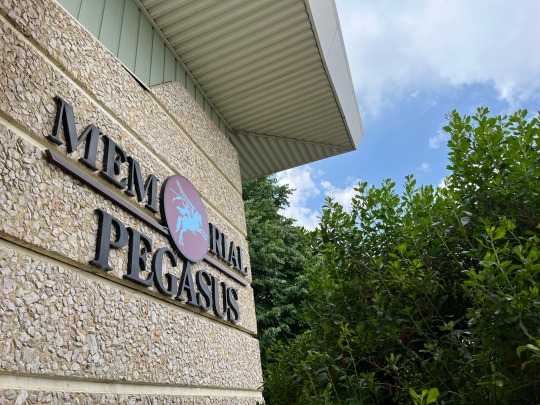
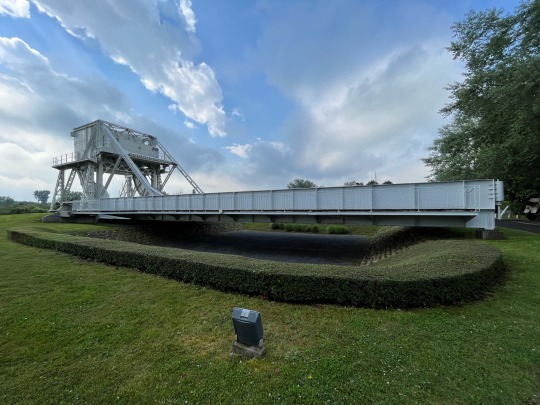



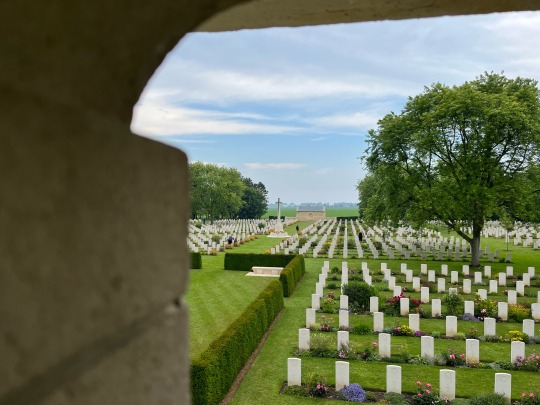
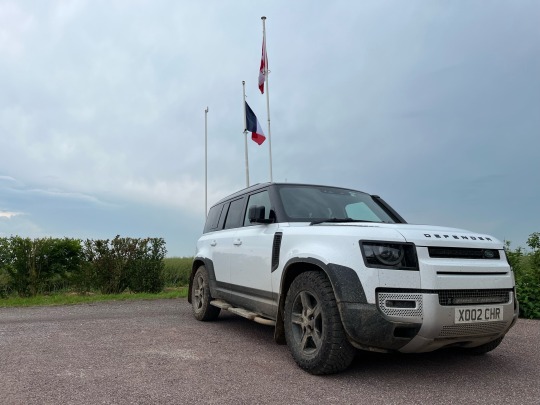



04/06/2022 - Day 1
The location for the group to meet was just a stones throw from Pegasus bridge located in Bénouville. Here we met some familiar faces from a previous BF4x4 tour we did a few years ago. As always an introduction and agenda was shared where most of this tour will be spent in the Calvados (Normandy) area.
Today's agenda
Pegasus Bridge Memorial
Ranville War Cemetery
Colleville-Montgomery - The Hillman Fortress
Bény-sur-Mer Canadian War Cemetery
Arromanches-les-Bains - The Mulberry Harbour/Port Winston
Memorial Pegasus
As you would've guessed our first stop was indeed Pegasus bridge memorial/museum, now i'd imagine most would know this but the original captured bridge has been relocated away from the canal and the one you drive/walk over is a replica.
The site is dedicated to the men of the British 6th Airborne Division who were the first Allied troops to arrive in Normandy on the night of the 5th/6th of June 1944 where a small detachment of the 6th British Airborne Division surprised the German garrison guarding the bridges. The BF4x4 guides arranged for a guided tour to walk us through step by step how the assault unfolded and we were even lucky enough to meet a veteran - Well worth a visit.
Ranville War Cemetery
1.4 kilometres down the ride (3 minute drive) is the Ranville War Cemetery. Ranville was the first village to be liberated in France when the bridge over the Caen Canal was captured intact in the early hours of 6th June by troops of the 6th Airborne Division, who were landed nearby by parachute or glider. Many of the division's casualties are buried in Ranville War Cemetery.
The cemetery contains around 2,236 Commonwealth burials of WW2, 90 of them unfortunately are unidentified and 323 German graves. The churchyard also contains 47 Commonwealth burials, one of which is unidentified, and one German grave.
One grave of interest was of Private Emile Corteil, he was from Watford in Hertfordshire and served with A Company, 9th (Essex) Parachute Battalion. Corteil was the dog handler for the company, and his dog was called Glen. Both parachuted into France with their company on D Day, Emile was killed on D Day aged 19 years; Glen was also killed and the two were found lying together.
Colleville-Montgomery - The Hillman Fortress
From Ranville we head 7.5km northwest to The Hillman Fortress which sits south of the town Collevill-Montgomery. The Hillman Fortress was a command post among the German coastal defences on the Normandy beaches which was built between 1942 and 1944.
The 1st Battalion, Suffolk Regiment liberated the site on the 6th of June 1944 but took longer than expected. The delay in taking the bunker complex has been cited as a reason for the Allies not completing their major D-Day objective of taking Caen.
We were fortunate to experience a camp reenactment, this entailed enthusiasts dressing up as allies and Germans with decommissioned weapons and WW2 vehicles. 1940's radio's playing war speeches and also the Jive music like 'Boogie Woogie Bugle Boy' by The Andrews Sisters. It's honestly awesome to be amongst it and i'm sure many have got bitten by the reenactment bug. Once we had completed many laps of the camp and the fortress we has a spot to eat in the back of the 110 mainly cheese, ham and baguette (continental lunch) before heading off to our next destination of the day.
Bény-sur-Mer Canadian War Cemetery
Whilst in convoy heading west over the CB radio Keith informs us that we will be stopping off at another war cemetery, but this contains mostly Canadians. Many of those buried were of the 3rd Canadian Division who died either on 6th June or during the early days of the advance towards Caen, when the Division engaged the German 716th Division and the 21st Panzer Divisions.
As you look around any war cemetery it is hard to really comprehend that each headstone represents a lost life and though i'm stating the obvious it's just an overwhelming experience.
Arromanches-les-Bains - The Mulberry Harbour/Port Winston
And just when you thought the day was drawing to an end, when arriving at our accommodation for the next couple of nights which is the very nice Chateau de Bellefontaine. The guys at BF4x4 explained after checking in and freshening up we have a table booked at La Marine which overlooks Gold beach, where the remains of the Mulberry Harbour/Port Winston lie.
It was part of mission overlord, where the objectives at Gold Beach were to
- Secure a beachhead
- Move west to capture Arromanches
- Establish contact with the American forces at Omaha
- Capture Bayeux and the small port at Port-en-Bessin
- Link up with the Canadian forces at Juno to the east
The forces attacking Gold beach faced the German 352nd Infantry Division and German 716th Infantry Division and there were around 350 ally fatalities.
Mulberry "B" (British) was the harbour assembled on Gold Beach at Arromanches for use by the British/Canadian forces. The harbour was decommissioned 6 months after D-Day as the Allies were able to use the recently captured Antwerp port. The harbour was operated by 20 Royal Engineers under the command of Lt. Col. G C B Shaddick.
That will be enough about the history, the food at La Marine was fantastic and the on the house calvados shot (cider brandy) definitely opened up the airways.
Based on Day 1... tomorrow is going to be another epic day.
#landrover#defender#landroverdefender#overlander#4x4#defendertd5#overland#td5#defender110#land rover defender#battlefields4x4
13 notes
·
View notes
Note
Are there any specific historical figures that you wish there was a better all out biography about it? For example I know there are millions of books about Sir Winston Churchill but I have never found one that I feel stands out (also if you know of one please let me know!!!!!!) Same with stalin
I actually do think that Churchill and Stalin have definitive biographies that stand out amongst the scores of books written about them.
William Manchester's The Last Lion trilogy is the best biography I've read about Churchill. The entire trilogy is available in a boxed set (BOOK | KINDLE). The individual volumes that make up the trilogy are:
•The Last Lion: Winston Spencer Churchill: Visions of Glory, 1874-1932 (BOOK | KINDLE | AUDIO)
•The Last Lion: Winston Spencer Churchill: Alone, 1932-1940 (BOOK | KINDLE | AUDIO)
•The Last Lion: Winston Spencer Churchill: Defender of the Realm, 1940-1965 (BOOK | KINDLE | AUDIO) -- The third and final volume of the biography was finished after William Manchester died by Paul Reid, using much of Manchester's research and prep work. While one author stepping in to finish the work of another can sometimes be an issue, Reid's work and writing blends seamlessly with Manchester's.
As for Stalin, I think that Simon Sebag Montefiore's Stalin: The Court of the Red Tsar (BOOK | KINDLE | AUDIO) is the best single-volume biography published about the Soviet leader. Stephen Kotkin's two-volume biography on Stalin -- Stalin: Paradoxes of Power, 1878-1928 (BOOK | KINDLE | AUDIO), and Stalin: Waiting for Hitler, 1929-1941 (BOOK | KINDLE | AUDIO) -- is excellent and also stands out amongst other books about Stalin's life.
When it comes to some other historical figures that I think are in dire need of new, updated, deeply-researched, definitive biographies, I think number one on my list would be Fidel Castro. It's not that there aren't any books written Fidel (or any other historical figures I mention), it's just that I don't feel like there's been a full-fledged, great biography yet written about them. I have a bunch of books about Fidel, but I think the most recent one was written in the mid-1980s. I also would be interested in a better biography of Saddam Hussein. Con Coughlin wrote a pretty good book about Saddam, but the most up-to-date edition of the book was published shortly after Saddam was captured and before he was tried and executed. I imagine that there's a significant amount of new information and research from the past 20 years that could go into a definitive Saddam biography.
I've also been waiting for years for a good biography about Muammar Qaddafi. All the books I have about Qaddafi are from the 80s when he was Ronald Reagan's nemesis as the "mad dog of the Middle East". None of those books cover his attempt to normalize relations with the West after 9/11 when he was seemingly scared straight by what happened to Saddam, and then his epic downfall during the Arab Spring and Libyan Revolution, when his convoy was bombed by NATO as he tried to flee his crumbling country and he ended up being brutally killed by the people he had terrorized for 40 years after they found him cowering in a drainage ditch with his gold-plated gun. Qaddafi was such a weird and fascinating character that I'm shocked that there haven't been more documentaries about him. Honestly, if I still knew how to write, I'd absolutely write a book or film about Qaddafi. Unfortunately, I forgot how to write somewhere around 2014 or 2015.
#Biographies#Definitive Biographies#Winston Churchill#Joseph Stalin#Stalin#William Manchester#Simon Sebag Montefiore#Stephen Kotkin#Saddam Hussein#Saddam#Muammar Qaddafi#Qaddafi#Fidel Castro#Cuba#The Last Lion
12 notes
·
View notes
Text
it is insane to me that in the past two weeks i have not seen anyone mention the idea of installing a permanent air bridge or something similar to facilitate humanitarian aid to gaza. only france has just deployed a navy ship with helicopters to lend aid to hospitals and it will send an airplane with medical supplies tomorrow (article in dutch). and no other western government so far is showing any signs of similarly aiding the people of gaza.
2 million people are at risk of death by starvation and dehydration. lack of drinkable water puts them at risk of contracting sicknesses through consumption of contaminated water en masse. they have no access to fuel or electricity because it is being withheld on purpose. hospitals are overcrowded with those wounded or forcefully displaced by iof threats and bombings, and they are running out of supplies while their generators are almost running on fumes. actual international humanitarian organisations like oxfam, the red crescent and the un are barely able to provide help anymore bc they have no supplies. active fucking genocide and we're all waiting for israel to let a few meagre truck convoys with minimal supplies into their personal concentration camp while they're carpet bombing the civilian populace to hell and ignoring international law at every turn.
"oh, but an air bridge is not sustainable" back in the 1940s the allies supplied west berlin with necessities by airplane for almost a year bc the soviet union had blocked all points of entry:

obviously we're living almost 80 years after the fact and the political and geographical situation are not strictly comparable. that doesn't mean it's impossible to provide aid. that doesn't mean it shouldn't be our moral duty to help palestinian civilians with everything we have. these are people in need. but it's not the people of west berlin and their allies against the soviet union, it's palestinians against the state of israel, and it makes all the difference in the world. this time, the usa backs the oppressor, and it would never reach out a finger to help palestinians. and by extension, so would few other (western) countries. many of them are calling for ceasefires and more humanitarian aid. some of them are warning israel about ignoring international law. but are they actually putting their money where their mouth is and actively getting supplies where they need to go?
oh, they're all sending soldiers and military materials, sure, because god forbid a regional war unfolds and we don't all have a finger in that pie. and all the while they keep talking, and planning international conferences, taking days, sitting and discussing what should be done, as if the urgency of this crisis doesn't even register, hasn't for the past two weeks. as if it never will. if you ask me the absolute minimum governments across the world are simply not putting in to help palestinians is testament to how much they do not care about them. so we have to keep raising our voices for palestine, keep marching, and remind them - not all of us can be complacent in the face of a genocide
#from the river to the sea#palestine will be free 🇵🇸#did you know the dutch government had a vote about that slogan today. they've decided it 'incites violence'#and 'calls for the destruction of the state of israel'#so obviously it is an evil phrase now.#palestine#gaza#israel
12 notes
·
View notes
Text

The German battleship Scharnhorst during gunnery trials in 1939. Scharnhorst was a German capital ship, alternatively described as a battleship or battlecruiser, of Nazi Germany's Kriegsmarine. She was the lead ship of her class, which included her sister ship Gneisenau. The ship was built at the Kriegsmarinewerft dockyard in Wilhelmshaven; she was laid down on 15 June 1935 and launched a year and four months later on 3 October 1936. Completed in January 1939, the ship was armed with a main battery of nine 28 cm (11 in) C/34 guns in three triple turrets. Plans to replace these weapons with six 38 cm (15 in) SK C/34 guns in twin turrets were never carried out.
ScharnhorstandGneisenauoperated together for much of the early portion of World War II, including sorties into the Atlantic to raid British merchant shipping. During her first operation,Scharnhorstsank the armed merchant cruiser HMS Rawalpindi in a short engagement (November 1939).ScharnhorstandGneisenauparticipated in Operation Weserübung (April–June 1940), the German invasion of Norway. During operations off Norway, the two ships engaged the battlecruiser HMS Renown and sank the aircraft carrier HMS Glorious as well as her escort destroyers Acasta and Ardent. In that engagementScharnhorstachieved one of the longest-range naval gunfire hits in history.
In early 1942, after British bombing raids, the two ships made the Channel Dash up the English Channel from occupied France to Germany. In early 1943,Scharnhorstjoined the Bismarck-class battleship Tirpitz in Norway to interdict Allied convoys to the Soviet Union.Scharnhorstand several destroyers sortied from Norway to attack a convoy but British naval patrols intercepted the German force. During the Battle of the North Cape (26 December 1943), the Royal Navy battleship HMS Duke of York and her escorts sank Scharnhorst. Only 36 men survived, out of a crew of 1,968.
2 notes
·
View notes
Text
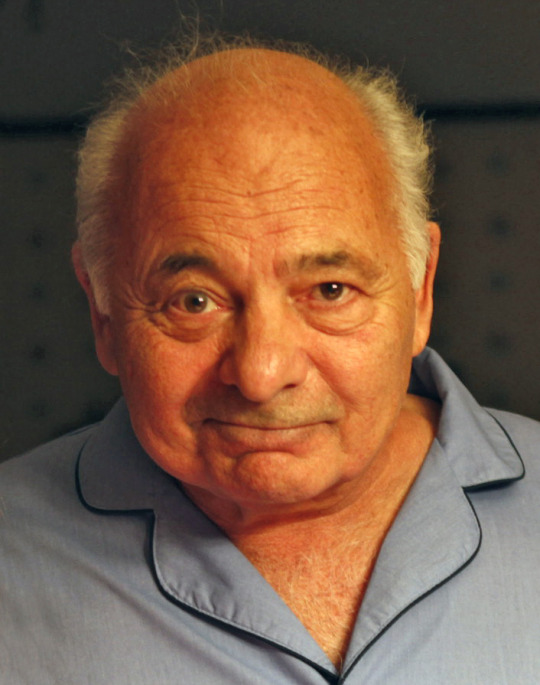
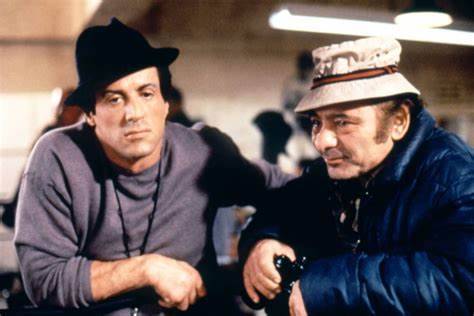
BURT YOUNG (Gerald Tommaso DeLouise 1940-Died October 8th 2023,at 83). American actor, author, and painter. He played Rocky Balboa's brother-in-law and best friend Paulie Pennino in the Rocky film series, his performance in the first installment of which earned him a nomination for the Academy Award for Best Supporting Actor.
Young appeared in such films as Chinatown (1974), The Gambler (1974), The Killer Elite (1975), Convoy (1978), Uncle Joe Shannon (1978), Once Upon a Time in America (1984), The Pope of Greenwich Village (1984), A Summer to Remember (1985), Back to School (1986), Last Exit to Brooklyn (1990), Mickey Blue Eyes (1999), Transamerica (2005), Win Win (2011), and Bottom of the 9th (2019). Burt Young - Wikipedia
#Burt Young#American Actors#Actors#Rocky#Rocky Franchise#Sylvester Stallone#Paulie Pennino#Notable Deaths in October 2023#Notable Deaths in 2023#American Character Actors#Character Actors
3 notes
·
View notes
Text
Events 3.28 (after 1940)
1941 – World War II: First day of the Battle of Cape Matapan in Greece between the navies of the United Kingdom and Australia, and the Royal Italian navy.
1942 – World War II: A British combined force permanently disables the Louis Joubert Lock in Saint-Nazaire in order to keep the German battleship Tirpitz away from the mid-ocean convoy lanes.
1946 – Cold War: The United States Department of State releases the Acheson–Lilienthal Report, outlining a plan for the international control of nuclear power.
1959 – The State Council of the People's Republic of China dissolves the government of Tibet.
1961 – ČSA Flight 511 crashes in Igensdorf, Germany, killing 52.
1965 – An Mw 7.4 earthquake in Chile sets off a series of tailings dam failures, burying the town of El Cobre and killing at least 500 people.
1968 – Brazilian high school student Edson Luís de Lima Souto is killed by military police at a student protest.
1969 – Greek poet and Nobel Prize laureate Giorgos Seferis makes a famous statement on the BBC World Service opposing the junta in Greece.
1970 – An earthquake strikes western Turkey at about 23:05 local time, killing 1,086 and injuring at least 1,200.
1978 – The US Supreme Court hands down 5–3 decision in Stump v. Sparkman, a controversial case involving involuntary sterilization and judicial immunity.
1979 – A coolant leak at the Three Mile Island's Unit 2 nuclear reactor outside Harrisburg, Pennsylvania leads to the core overheating and a partial meltdown.
1979 – The British House of Commons passes a vote of no confidence against James Callaghan's government by one vote, precipitating a general election.
1990 – United States President George H. W. Bush posthumously awards Jesse Owens the Congressional Gold Medal.
1994 – In South Africa, African National Congress security guards kill dozens of Inkatha Freedom Party protesters.
1999 – Kosovo War: Serb paramilitary and military forces kill at least 130 Kosovo Albanians in Izbica.
2001 – Athens International Airport Eleftherios Venizelos begins operation.
2003 – In a friendly fire incident, two American A-10 Thunderbolt II aircraft attack British tanks participating in the 2003 invasion of Iraq, killing one soldier.
2005 – An earthquake shakes northern Sumatra with a magnitude of 8.6 and killing over 1000 people.
2006 – At least one million union members, students and unemployed take to the streets in France in protest at the government's proposed First Employment Contract law.
1 note
·
View note
Text

Boulton Paul Defiant | Classic Warbirds
In the 1930s a new tactical concept was conceived, this proposed the idea that fighters would have a gun turret mounted on them as opposed to forward firing guns as it was anticipated that enemy bombers attacking the UK would be unescorted. This appeared to have two advantages, firstly, it meant the pilot could concentrate on flying the aircraft and not have to worry about finding and hitting a target. Secondly the guns could be used over a greater area than before and could be used for both offence and defence.
When the Air Ministry issued Specification F.9/35 on the 26th June 1935 for a two-seater monoplane aircraft with a power operated gun turret that would be able to operate both at day and night, Hawker, Fairey, Supermarine, Gloster, Armstrong Whitworth and Boulton Paul all made submissions. Hawker's prototype, called the Hotspur, along with the Boulton Paul F.82 saw an order for two prototypes of each placed during October 1935. This was followed by an order for 87 of Boulton Paul's aircraft and 389 of the Hawker Hotspur on the 28th April 1937. However the only Hotspur prototype produced would not fly until the 14th June 1938, ten months after Boulton Paul's. By this time Hawker were committed to producing their Hawker Hurricane fighter and so development of the Hotspur was cancelled.
A two-seater, its crew consisting of a pilot and gunner, low-wing cantilever monoplane fighter of all metal construction with retractable tail wheel type landing gear and powered by a Rolls-Royce Merlin I engine the first prototype of Boulton Paul's aircraft, now called the Defiant, made its initial flight on the 11th August 1937 in the hands of Cecil Feathers, Boulton Paul test pilot, and minus its rear turret, which would be fitted during February 1938. On the 7th December 1937 the Defiant prototype was sent to the Aeroplane and Armament Experimental Establishment at Martlesham Heath for trials.
The second prototype was powered by the Rolls-Royce Merlin II engine and made its maiden flight on the 18th May 1939 with the large heavy four gun turret mounted within the fuselage just behind the cockpit, this was to be the aircraft's only armament as it had no forward firing guns. However the weight and high degree of drag caused by the protruding section of the turret was to limit both the manoeuvrability and speed of the Defiant.

The first production Boulton Paul Defiant was flown on the 30th July 1939 and would originally operate as a day fighter. With a top speed of 304 mph, range of 465 miles, service ceiling of 30,350 ft and armament of four 0.303-in machine-guns the first deliveries of this new aircraft were made to No. 264 Squadron, who had been reformed on the 30th September 1939, with the first two arriving on the 8th December 1939. This was followed by No. 141 Squadron, who received their first Defiant on the 4th April 1940, and became the second operational Boulton Paul Defiant squadron on the 3rd June 1940. The next month saw No. 264 Squadron move to RAF Duxford on the 10th May 1940. Two days later on the 12th May 1940 No. 264 Squadron took the Defiant into battle over Continental Europe for the first time when six were in action over the Netherlands.
The 19th July 1940 saw the Defiant used in the Battle of Britain (10th July 1940 - 31st October 1940) for the first time when No. 141 Squadron were tasked with convoy protection. However after being bounced by Messerschmitt Bf 109s they lost six of the nine aircraft, with the loss of ten aircrew killed, this would be the only Defiant day fighter sortie performed by the squadron. No. 264 Squadron also saw action during the Battle in August but by now the Luftwaffe pilots had worked out that if they attacked the Defiant head on they could do so with complete immunity. This saw the aircraft suffer increasing losses, and as a result they would no longer operate as day fighters from the 28th August 1940.
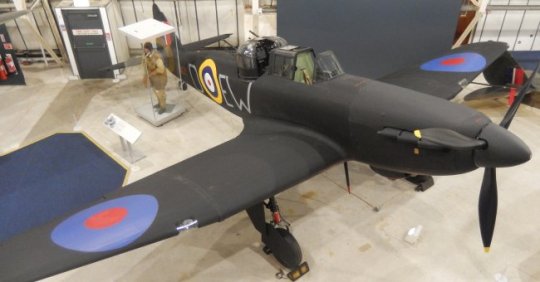
The Boulton Paul Defiant was instead moved into a new night fighter role, beginning regular patrols in September 1940, which lead to the Defiant NF Mk IA and a number of aircraft were installed with a comparatively new and secret Airbourne Interception Mk. IV radar. It was in the night fighter role that the Defiant was to have success as part of Britain's night defences in the winter of 1940-41. During this period they were to shoot down more enemy aircraft than any other contemporary night fighter. With the introduction of newer aircraft for night fighting No. 264 Squadron would be the last to operate the Defiant in this role, until May 1942, when they were replaced by the de Havilland Mosquito Mk II.
The aircraft would be involved in one of the more mysterious episodes of the Second World War (1939 - 1945) when on the 10th May 1941 a pair of Defiants from No. 141 Squadron were sent to intercept an aircraft. Despite pursing the aircraft they were unable to catch it. It would later transpire that the aircraft was a Messerschmitt Bf 110 flown by Rudolf Hess, the Deputy Fuhrer to Adolf Hitler.
To try to improve the performance of the Defiant two Mk Is served as prototypes for the new Mk II version. Fitted with a more powerful Merlin XX engine whilst other changes to the aircraft saw the rudder improved with a greater area, modifications to the fuel systems, engine cooling and an increased fuel capacity, with the 20th July 1940 seeing the first Defiant Mk II prototype fly. Its top speed of 313 mph was an improvement over the Mk I as was its range of 480 miles. The Mk IIs service ceiling was 30,348 ft and armament remained the four 0.303-in machine-guns. Over 200 were built, although many were converted to target tugs later on, and a number were built as dedicated target tugs. In this role they were used both at home and in the Middle and Far East. Defiants were also used for air-sea rescue, carrying air dropped dinghies.
The Boulton Paul Defiant would achieve the feat of becoming, not only the RAF's first electronic countermeasures aircraft, but the world's first. It would be equipped with either Mandrel, which jammed the German early warning radar known as Freya. The other was known as Moonshine, this made a raid appear on German radar larger than it really was. It was in the ECM role on the 17th July 1943 that four Defiants from No. 515 Squadron flew the types final operational sortie.
A Defiant TT Mk I would be sent to Martin-Baker on the 11th December 1944 so it could be used by the company to test their ejection seats. The first dummy trials started on the 11th May 1945. Martin-Baker also received a second Boulton Paul Defiant which they used to test their ejection seats. The Air Ministry would also conduct their own trials using a Defiant until March 1947.
February 1943 saw Defiant production end and in total 1,064 had been built.
Technical Details
Click on the aircraft image to view a larger version.
P
Top Speed Range Service Ceiling Armament
Defiant Mk I 304 mph 465 miles 30,350 ft four 0.303-in machine-guns
Defiant Mk I side profile image
Defiant Mk II 313 mph 480 miles 30,348 ft four 0.303-in machine-guns
Defiant TT Mk III Target tug.
youtube
Back to the top
TAP ARROW BUTTON TO VIEW☝️
3 notes
·
View notes
Text
1940-Kanalkampf
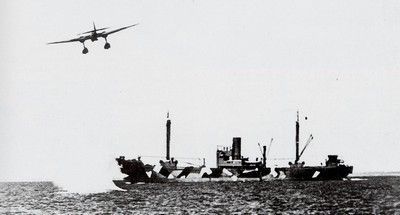
Six days before Adolf Hitler issues his Directive 16 to the combined Wehrmacht armed forces for Operation Sea Lion, the Kanalkampf shipping attacks against British maritime convoys begin, in the leadup to initiating the Battle of Britain.


The Kanalkampf (Channel Battle) was the German term for air operations by the Luftwaffe against the Royal Air Force (RAF) over the English Channel in July 1940, beginning the Battle of Britain during the Second World War. By 25 June, the Allies had been defeated in Western Europe and Scandinavia. Britain had rejected peace overtures and on 16 July, Adolf Hitler issued Directive 16 to the Wehrmacht (German armed forces), ordering preparations for an invasion of Britain, under the codename Unternehmen Seelöwe (Operation Sea Lion).
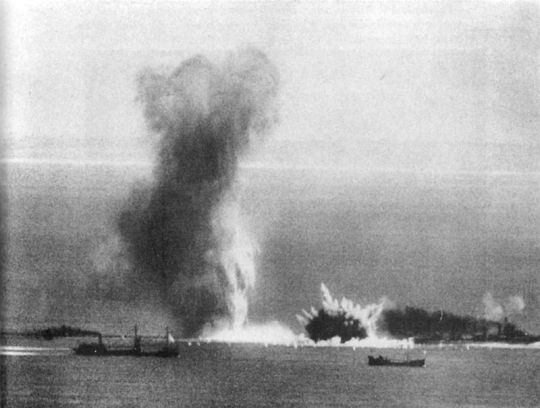
6 notes
·
View notes
Text
Wednesday 14th June 2023
The day dawned sunny and warm, so we sat outside to eat breakfast. We had survived the night without interference from bears or cockerels. The garden here runs down from the apartment to the river via a gate which supposedly keeps the bears out. The owners have a little jetty which peeps out over the flow of the clear waters. Small fish can be seen of the sort that have the general term of tiddler. David Attenborough would know what I mean. Breakfast consumed, we set off along the gravel Lake Cowichan Trail which passes the apartment and leads from Duncan along to the small town of Lake Cowichan. This is a great facility for the locals and attracts all manner of riff raff as they walk, dog walk, or cycle. It follows the course of the old railway line which closed in the 1970s. Talking to a spitting image of Reese Witherspoon in the library, it would appear that the logging companies own much of Vancouver Island, a fact which is not without local irritation. So it was that when the rail link no longer formed a necessary function for logging, it was closed and the tracks grubbed up. Well we had Beeching, and they have the logging companies. We visited a small museum of logging memorabilia describing the industry on the Island. Situated ironically in the old station building, the exhibits demonstrate just how hard a life it was for workers in the lumber business and equally just how dangerous it proved to be. Chinese workers left over from gold rush days made up large contingents of the workforce despite the preduces pervading at the time. It was not until the 1940s that unions were formed and improved levels of safe working practices were introduced dramatically reducing casualties within the felling and milling industries.
Today the lumber business is still very important to the area but still lives with controversy. New plantations are felled alongside old trees and convoys of timber trucks regularly ply the roads here.
Of course the big event in Lake Cowichan is the lake itself, so we took ourselves off to enjoy a truly tranquil part of it with the mountains and tree clad slopes as a surreal backdrop to the calm waters before us. No bears in sight!
As a prequel to our evening meal we sat out on the jetty drinking SB as the sun set behind the trees. As we sat there a bald eagle swooped down and flew the course of the river in front of us! Unbelievable, and although not unknown on this bank of the river, no sign yet again of a bear.
Big challenge tomorrow for us. It would appear that Highway 4 on route to our next stop, Tofino, is blocked by a forest fire. This might be difficult to circumvent and plans could need to be changed radically
ps. Anyone for a deep fried ice-cream?

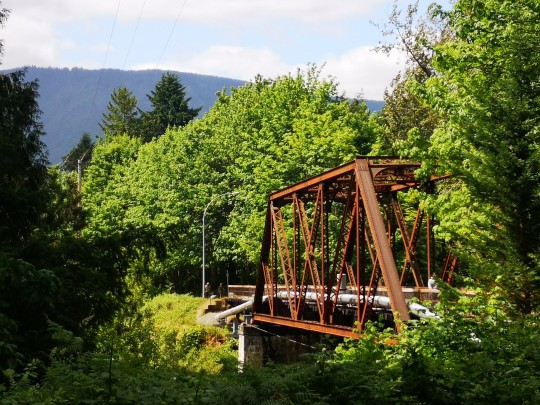




5 notes
·
View notes
Text

A British Depth Charge crew swings into action aboard an armed trawler - Atlantic Ocean 1940. At this stage of the war a desperate shortage of Royal Navy escort craft meant that many trawlers were commandeered for this kind of work.
#world war two#1940s#worldwar2photos#history#ww2#wwii#ww2 history#wwii era#ww2colourphotos#world war 2#1940#royal navy#depth charge#atlantic#war in the atlantic#battle of the atlantic#Atlantic convoy#trawler
97 notes
·
View notes
Text



August 26th 1875 saw the birth of the Novelist and statesman John Buchan in Perth.
His father was a minister in the Free Church of Scotland.
Following a, more or less, usual education for those times, he went first, to Glasgow University and then Brasenose College, Oxford after which he trained as a barrister and was called to the bar in 1901. Buchan went to South Africa later in 1901 to assist in the re-structuring of that country in the wake of the Boer Wars but returned to England in 1903.
In July 1907 he married Susan Charlotte Grosvenor. They had two children.
He worked as a literary adviser for the Nelson publishing house until the First World War, in which he served in the Intelligence Corps at first, and later in the Ministry of Information. After the war he became a Member of Parliament.
Buchan was a writer throughout his life. Whatever his job, wherever he was, he continued writing. He authored over 100 books in total, covering a considerable range: history, biography, essays, and fiction. All of them well thought of by those best able to judge them. But it is for his fiction that he is most remembered by the public at large.
Some of his better-known are,The 39 Steps, Greenmantle, and John Macnab
In 1935 he was created Baron Tweedsmuir of Elsfield and also appointed governor-general of Canada, a post which he held until his death. He was featured on the cover of the iconic Time magazine in October 1935.
On the 6th February 1940 in Montreal, he suffered a cerebral thrombosis and died 5 days later (aged 64).
Although most well know for his novels, and non fiction, Buchan was an accomplished published poe,so I searched throughsome of his work and found a verse that was very personal to him.I is extract from his elegy shows how nature co-existed with horrendous warfare - and also how an individual tragedy can have the widest of resonances.
ALASTAIR BUCHAN (1917)
A mile or two from Arras town
The yellow moorland stretches far,
And from its crest the roads go down
Like arrows to the front of war.
All day the laden convoys pass,
The sunburnt troops are swinging by,
And far above the trampled grass
The droning planes climb up the sky.
In April when I passed that way
An April joy was in the breeze;
The hollows of the woods were gay
With slender-stalked anemones.
The horn of Spring was faintly blown,
Bidding a ransomed world awake,
Nor could the throbbing batteries drown
The nesting linnets in the brake.
And as I stood beside the grave,
Where ’mid your kindly Scots you lie,
I could not think that one so brave,
So glad of heart, so kind of eye,
Had found the deep and dreamless rest,
Which men may crave who bear the scars
Of weary decades on their breast,
And yearn for slumber after wars.
You scarce had shed your boyhood’s years,
In every vein the blood ran young,
Your soul uncramped by ageing fears,
Your tales untold, your songs unsung.
As if my sorrow to beguile,
I heard the ballad’s bold refrain:
‘I’ll lay me downe and bleed a-while,
And then I’ll rise Aand fight again.
5 notes
·
View notes
Photo

The Butterbox Babies
The Ideal Maternity Home operated in East Chester, Nova Scotia, Canada from the late 1920s through at least the late 1940s. William and Lila Young operated it. William was a chiropractor and Lila was a midwife, although she advertised herself as an obstetrician. While they were tried for various crimes involving the home, including manslaughter, the entire truth of the horrors perpetrated there was not widely known until much later.
The Ideal Maternity Home promised both maternity care for local married couples and discreet birthing and placement for children of unwed mothers. The home was the source of babies for an illegal trade in infants between Canada and the United States. During this period the laws in the US forbid adoption across religious backgrounds. There was an acute shortage of babies available for Jewish couples to adopt. The home would provide these desperate people "black market" adoptions charging up to $10,000 for a baby. Many of the babies in the 1940s ended up in Jewish homes in New Jersey. At the same time they would charge the mothers $500 for their services. At this time the average wage in the area was $8 a week. Many of the mothers could not afford this sum, and were forced to work at the home for up to eighteen months to pay their bill.
During WWII business was booming because nearby Halifax was a major port serving as the point of departure for convoys crossing the North Atlantic to England. Many of these ships never completed the journey. The sailors and merchant seamen would squeeze as much of life into their days in port as they could, and many women were left as unmarried or widowed expectant mothers. The Ideal Maternity Home offered almost the only place that could provide for these women and their children.
What was discovered later was that the Youngs would purposely starve "unmarketable" babies to death by feeding them only molasses and water. On this diet the infants would usually last only two weeks. Any deformity, a serious illness or "dark" coloration would often seal their fate. Babies who died were disposed of in small wooden grocery boxes, typically used for dairy products. Thus the term Butterbox Babies is used to refer to these unfortunate infants. The Butterbox Babies bodies were buried on the property, adjacent to a nearby cemetery, at sea or sometimes burned in the homes furnace. In some cases married couples who had come to the home solely for birthing services were told that their baby had died shortly after birth. In truth these babies were also sold to adoptive parents. The Youngs would also separate or create siblings to meet the desires of customers. It is estimated that between four and six hundred babies died at the home, while at least another thousand survived and were adopted. Even these lucky survivors often suffered from ailments caused by the unsanitary conditions and lack of care at the home.
15 notes
·
View notes
Text

HMS Argus (I49)
HMS Argus was a British aircraft carrier that served in the Royal Navy from 1918 to 1944. She was converted from an ocean liner that was under construction when the First World War began and became the first example of the standard pattern of aircraft carrier, with a full-length flight deck that allowed wheeled aircraft to take off and land. After commissioning, the ship was involved for several years in the development of the optimum design for other aircraft carriers. Argus also evaluated various types of arresting gear, general procedures needed to operate a number of aircraft in concert and fleet tactics. The ship was too top-heavy as originally built, and had to be modified to improve her stability in the mid-1920s. She spent one brief deployment on the China Station in the late 1920s before being placed in reserve for budgetary reasons.
Argus was recommissioned and partially modernised shortly before the Second World War and served as a training ship for deck-landing practice until June 1940. The following month she made the first of her many ferry trips to the Western Mediterranean to fly off fighters to Malta; she was largely occupied in this task for the next two years. The ship also delivered aircraft to Murmansk in Russia, Takoradi on the Gold Coast, and Reykjavík in Iceland. By 1942, the Royal Navy was very short of aircraft carriers, and Argus was pressed into front-line service despite her lack of speed and armament. In June, she participated in Operation Harpoon, providing air cover for the Malta-bound convoy. In November, the ship provided air cover during Operation Torch, the invasion of French North Africa, and was slightly damaged by a bomb. After returning to the UK for repairs, Argus was used again for deck-landing practice until late September 1944. In December, she became an accommodation ship, and was listed for disposal in mid-1946. Argus was sold in late 1946 and scrapped��the following year.
read more..
#education#today i learned#learning#educate yourselves#wikipedia#wiki today#today news#today#featured#article#school#ship#aircraft#hms#navy#royal navy
2 notes
·
View notes
Video
Hawker Sea Hurricane Ib ‘Z7015 / 7-L’ (G-BKTH) by Alan Wilson
Via Flickr:
c/n CCF/41H/4013. Owned and operated by the Shuttleworth Collection and seen taking off to display at the collection’s 2022 Season Premiere Air Show. Old Warden, Bedfordshire, UK. 1st May 2022 The details below were from a previous version of the Shuttleworth Collection website:- "After the early success of the Hawker Hurricane in RAF service during the Battle of Britain, the Royal Navy decided to introduce the Hurricane as protection for the Atlantic convoys. These convoys were being monitored by FW-200 Condor aircraft, which operated far outside the range of land based aircraft, and co-ordinated the attacks of the U-boats on the convoys. An interim measure gave birth to the 'Hurricat', a modified Hurricane which was mounted on a catapult located on the bows of some modified merchant ships. The only modifications to the Hurricane for this role was the addition of catapult spools and as such were designated Sea Hurricane Ia's. These Sea Hurricanes were not ideal, as once they were launched they either had to make it back to a land base or ditch in the sea near to the convoy. An improved Sea Hurricane was the Ib, this had the catapult spools and an arrester hook to enable them to land back on merchant ships modified to have a small flight deck. Hurricane Z7015 was built by Canadian Car & Foundry at its Fort William, Ontario, plant during 1940 as a Mk I, after flight testing Z7015 was shipped to the UK. On June 27 1941 it was converted to Sea Hurricane Ib standard. Z7015 had a patchy wartime flying career, which ended in 1943, when it was delivered to Loughborough College as an instructional airframe. It remained there until it was transferred to the Shuttleworth Collection in 1961. Z7015 was used statically in the 'Battle of Britain' film, before restoration to flying condition began. Several attempts to restore the aircraft were made, until in 1981, Z7015 was transferred to Duxford and another restoration was started, this time by the Duxford Aviation Society. This restoration was progressing slowly until a formal agreement was reached between the Imperial War Museum and the Shuttleworth Collection, which meant that the same team that had restored the Collection's Spitfire would restore Z7015. The renewed restoration started in earnest in February 1986 and led to the first flight of the World’s ONLY Sea Hurricane Ib, in the hands of pilot Andy Sephton, on September 16 1995."
3 notes
·
View notes
